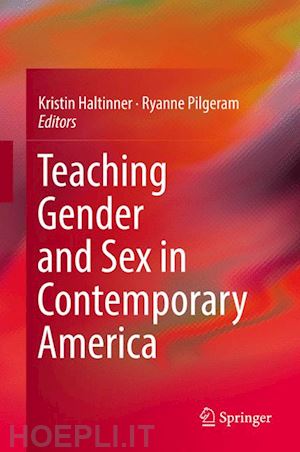Introduction: Patricia A. Adler and Peter Adler.- PART I. Reframing Gender.- Chapter 1: Sex & Gender in International Sports: Athletes and the Social Construction of Sex by Sumner McRa.- Chapter 2: The Mis-education of Lady Gaga: Confronting Essentialist Claims in the Sex and Gender Classroom by Andrea Miller.- Chapter 3: Performances of Pronouns: Using Feminist Post-Structuralism to Explore the Social Construction of Gender by Alison Happel-Parkins.- Chapter 4: Undoing Gender: Making the Invisible Visible by Lindsay Custer.- Chapter 5: Queering the Sociology of Gender by Kristin Haltinner/- Chapter 6: Make Us Whole!: Deconstructing Gender Narratives to Build Solidarity by Annie D. Jollymore.- Chapter 7: SGS: A Sensitizing Concept for Teaching Gender Diversity by Linda J. Henderson.- PART II. Intersecting with Systems of Power.- Chapter 8: Choosing to Abort, Alter, Adopt, or Accept: Teaching about Abortion in the Undergraduate Classroom by Elroi Windsor.- Chapter 9: Teaching about Gendered Violence Without Disempowering Women by Jocelyn A. Hollander.- Chapter 10: Silence, Violence, Safety and Respect: The Challenges of Teaching about Gender and Violence by Nikki McGary.- Chapter 11: Women and Work: Teaching the Pay Gap by Cynthia D. Anderson and Kelly Faust.- Chapter 12: Teaching Work and Gender in the 21stCentury by Erin K. Anderson.- Chapter 13: An Autoethnographic Mix Tape: Deconstructing Gender Identity Through Music that has Meaning to “us” by Anita Harker.- Chapter 14: Pulp Friction: How College Women Navigate Identity, Sexuality and Gender Conformity in Recent Mega-Hit Book Series by Suzan M. Walters and Michael Kimmel.- Chapter 15: Doing Critical Pedagogy in an Ironically Sexist World by Valerie Chepp and Lester Andrist.- Chapter 16: Coding the Crisis of Masculinity by Kyle Green and Madison Van Oort.- Part III: Creating Intentional Classroom Dynamics.- Chapter 17: From Protest to Praxis or Being Real in the Classroom by Charlotte A. Kunkel.- Chapter 18: They Don’t Get It: The Promise and Problem of Using Student Resistance as a Pedagogical Tool by Courtney Caviness, Patti Giuffre, and Maria Wasley.- Chapter 19: Learning for a Change: Rage and the Promise of the Feminist Classroom by Deborah J. Cohan.- Chapter 20: Teaching Spaces of Possibility: Cultivating Safe, Relaxed, and Challenging Classrooms by Danielle Antoinette Hidalgo.- Chapter 21: Agency and Activism as Elements in a ‘Pedagogy of Hope’ Moving Beyond ‘This Class is Depressing’ by Maggie Rehm.- Part IV: Teaching About Gender and Sex in Broader Contexts.- Chapter 22: The Pedagogical Challenge of Teaching Privilege, Loss, and Disadvantage in Classrooms of Invisible Social Identities by Traci Craig.- Chapter 23: Critical Pedagogy: Disrupting Classroom Hegemony by Tre Wentling.- Chapter 24: Infusing Feminist Disability Studies in OurTeaching by Heather Albanesi, Abby Ferber, Andrea O’Reilly Herrera, Emily A. Nusbaum, and Linda Ware.- Chapter 25: Teaching Gender in Other Classrooms: a View from the Outside by Jyoti Grewal Chapter 26: On Teaching About Sex and Gender in Each and Every Political Science Course by Daniel Brian Andersen.- Chapter 27: Making the Invisible Visible: Shining a Light on Gender and Sexuality in Courses Primarily Focused on Other Topics by Kelsy Burke and Alexa Trumpy.- PART V:Conclusion.- Chapter 28: Conclusion by Kristin Haltinner.- Appendixes.











